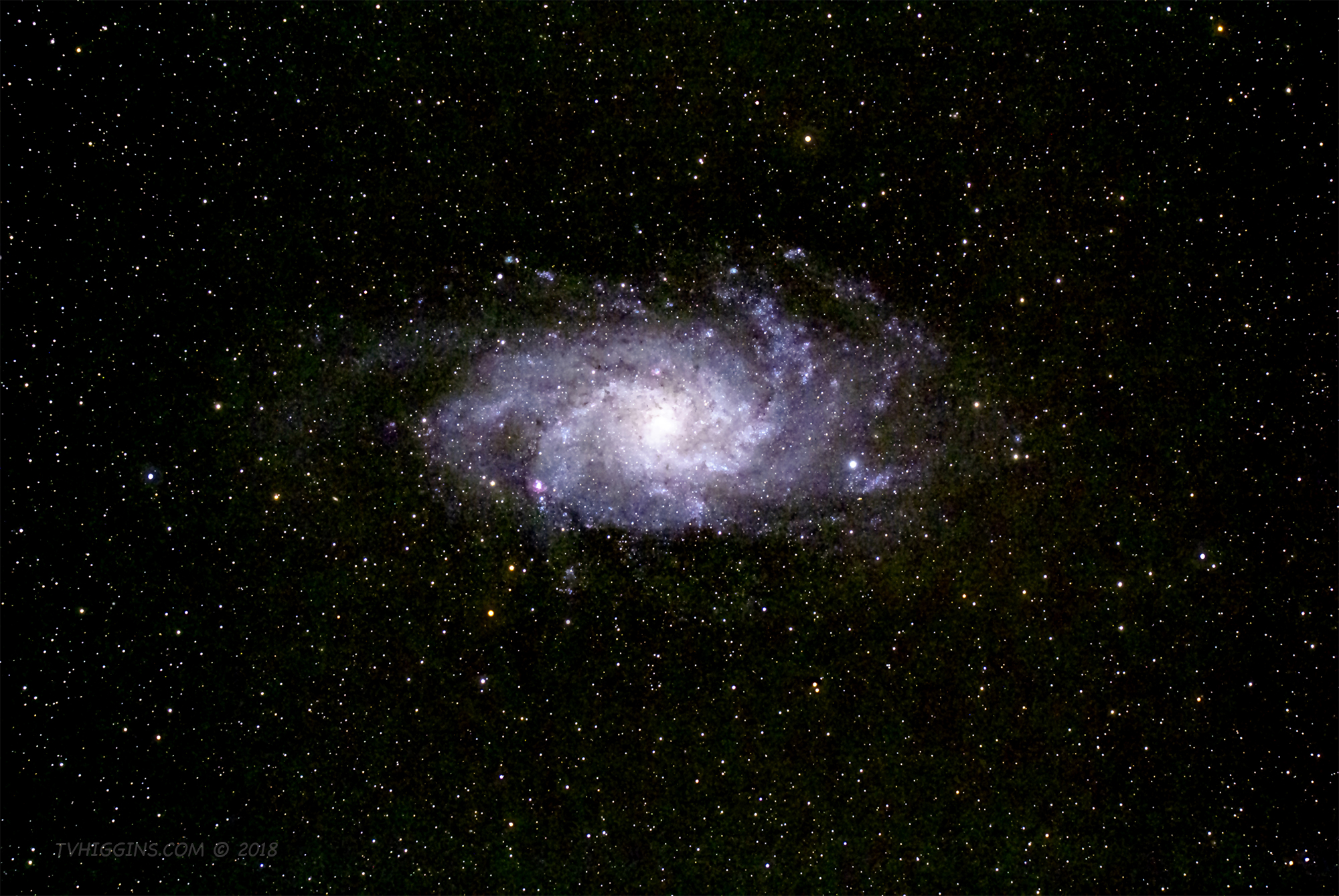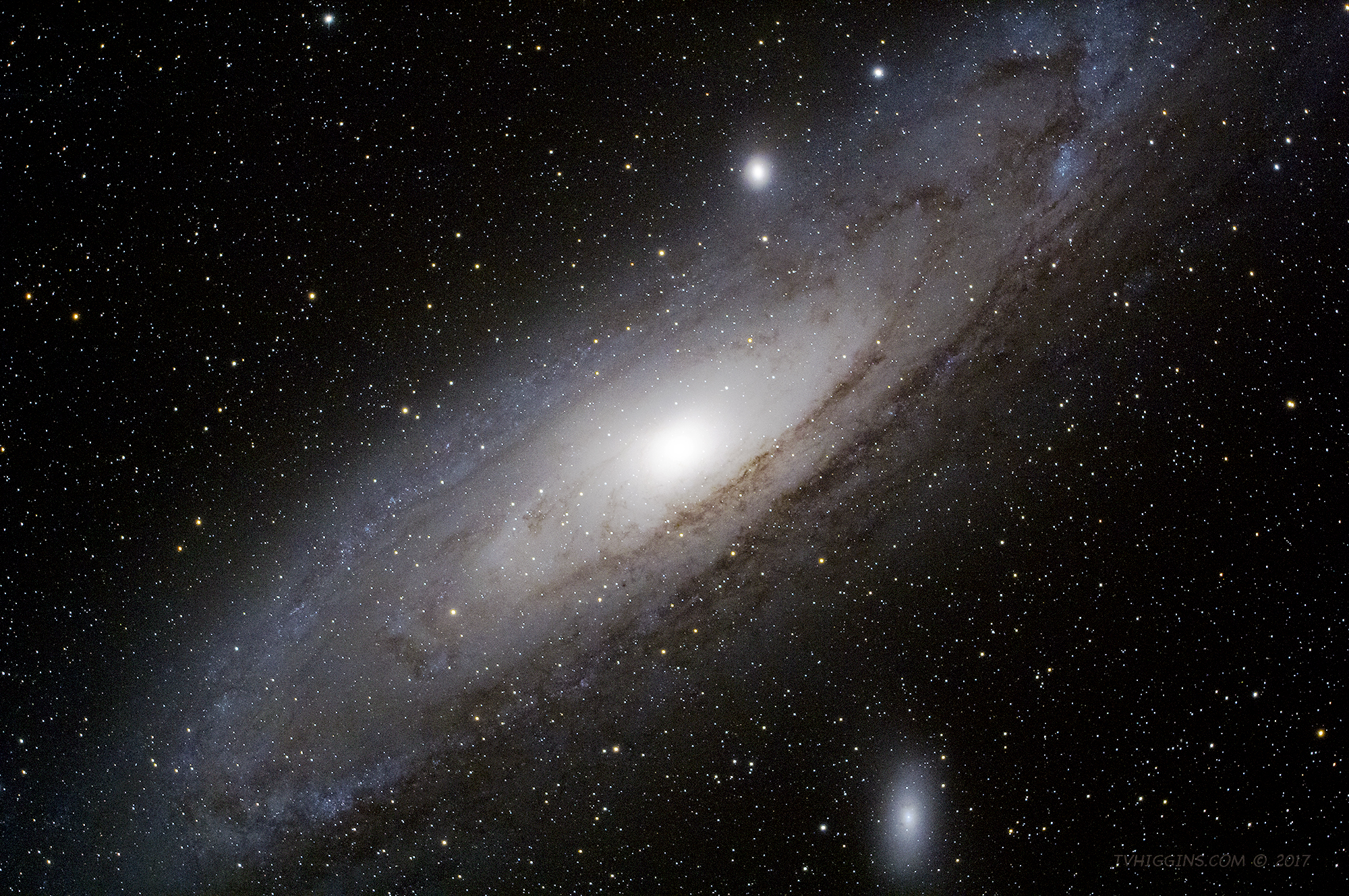- Telescope: Stellarvue SVA130T-IS
- Mount: Losmandy G-11 with Gemini 2 controller
- Autoguiding: Yes
- Optical Configuration: 0.72x field flattener & reducer (f/5)
- Camera: Canon 60Da
- Light Frames: 24, 5-min. exposures
- Calibration: None (no darks, no flats, no biases)
- Exposure Time: 120 min. (24 x 5 min.)
- ISO: 800
- Processing: Photoshop CC
- Imaging Location: Sierra Nevada Mountains (Altitude: 8,600 ft)
On a very dark and clear autumn night, a sharp eye can spot the Triangulum Galaxy (M33) high in the sky in the constellation Triangulum. At a distance of 3 million light-years, it is one of the farthest objects that can be seen with the naked eye.
The Triangulum Galaxy lives right next door to the Andromeda Galaxy (M31) in the constellation Andromeda, which is the largest member of our Local Group of galaxies that includes Andromeda (#1), our galaxy the Milky Way (#2), and Triangulum (#3). Altogether, our Local Group contains more than 54 galaxies.
The Triangulum Galaxy spans about 60,000 light-years and may contain 40 billion stars, which is about one tenth the number of stars in our galaxy.
[For Tom, whose artful words live on.]


